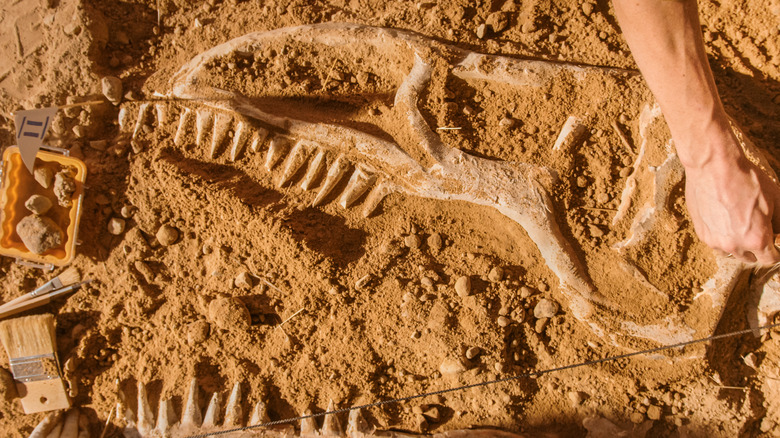How Google Earth Helped Uncover 167-Million-Year-Old Fossils
For paleontologists accustomed to digging up miles of Earth at a time, the government-mandated shutdowns might have stifled scientific discoveries. Fortunately for scientists and fossil lovers alike, there exists a virtual street view of the world. We call it Google Earth, and it is undoubtedly one of the most wondrous inventions of our generation.
Through Google Earth, we can effectively tilt the globe and visit three-dimensional cities all across the land from the comforts of our own living rooms. Google Earth made virtual touring a possibility at a time when many physical destinations were temporarily off-limits due to the coronavirus pandemic. Through Google Earth, we've discovered hidden rainforests, secret military bases, and even shipwrecks (via Live Science). Now, thanks to a talented couple of non-professional paleontologists by the names of Sally Hollingworth and Neville Hollingworth, we can add 167-million-year-old fossils to the list of fascinating Google Earth finds (via Daily Express).
The pair claims to have found a fossil site by scrolling through Google Earth
From inception to excavation, this find is one of remarkable proportions. Firstly, we have a site that was discovered by non-professionals. Secondly, we have a virtual treasure trove of fossilized species to rifle through. In what experts hail "Jurassic Pompeii" and "one of the biggest and most important troves of the Jurassic era", the myriad of fossils features a wide array of prehistoric sea species, including every member of the entire echinoderm family.
While the contribution proves that even amateurs can have a massive impact on the future of fossil discovery and preservation, it also speaks volumes about Google Earth. The satellite software's boundless capabilities are evidenced yet again through this colossal discovery. In a candid interview with the Daily Express, the couple claims they made the discovery by scrolling Google Maps in search of sites that might be ripe for fossils. From this standpoint, it is clear that Google Earth software is opening up a window not just into our present, but also into the graveyards of our past.

